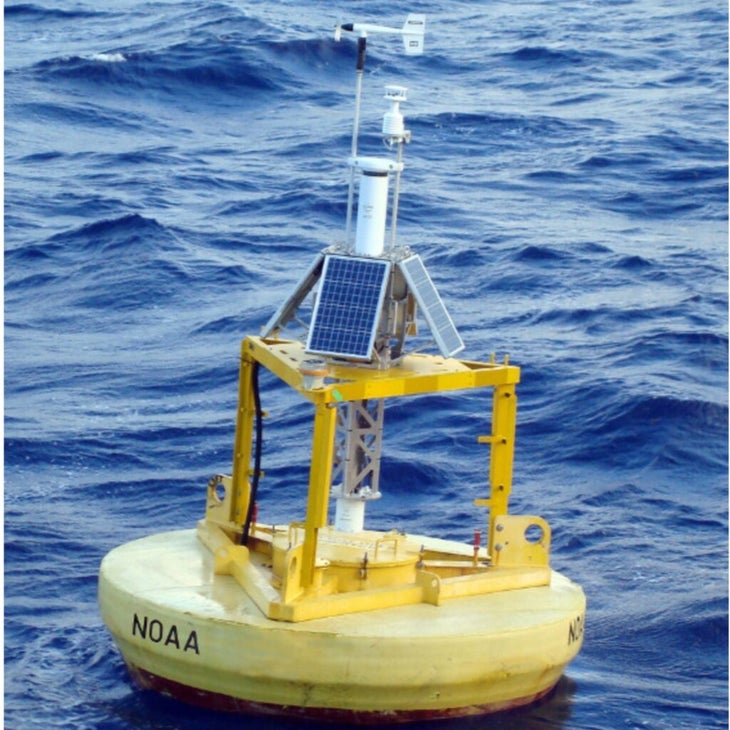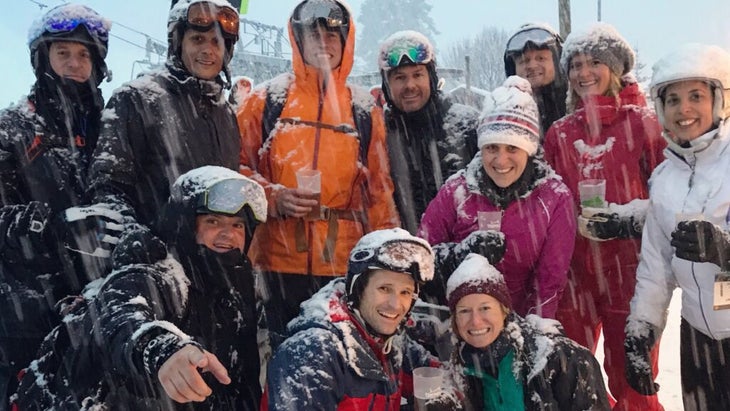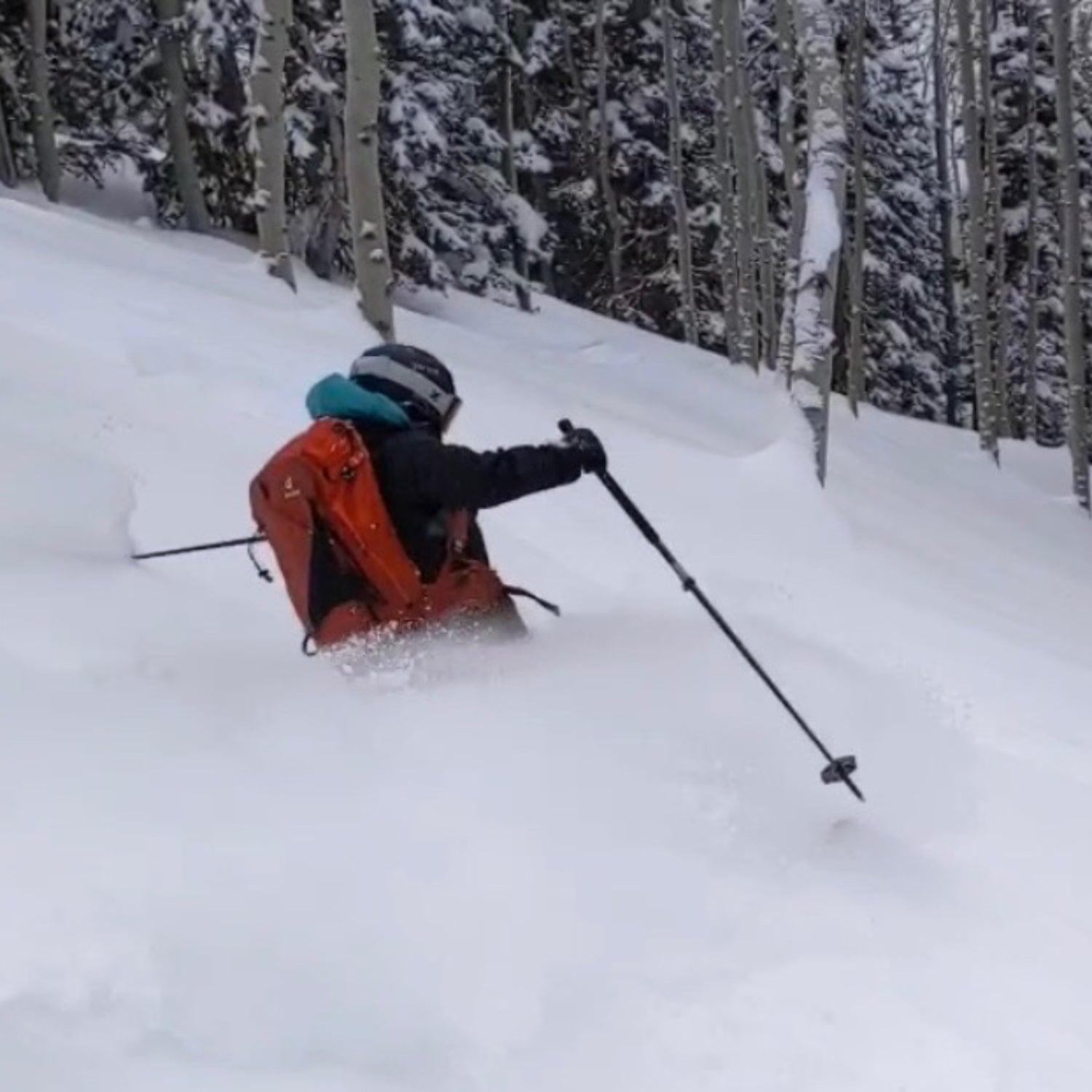Nothing ruins a ski vacation faster than no snow, and scoring a powder day can feel like winning the lottery in these climate-challenged times. While the global forecaster AccuWeather makes projections up to 90 days out, specific, precise daily reports cannot be made more than ten days in advance, according to a published in the��Journal of the Atmospheric Sciences. Given the chaotic nature of the atmosphere, two weeks out is probably the farthest accurate estimate we can hope for in the future.
So where does that leave travelers who want to plan ahead? Is there more we can do than just book a ski vacation to a popular winter destination��and hope for the best? Yes! Diehard skiers and snowboarders and skiers—and I count myself in that group—have discovered some tricks to line up trips with epic conditions.
The Surprising Accuracy of The Powder Buoy

In the early aughts, Mike Ruzek, a financial planner and avid skier based in Park City, Utah, had a client clue him in to thousands of miles west in the Pacific Ocean that surfers��were using as an alternative to wave-forecast sites like , to estimate how big��swell would get by the time it hit the Hawaiian Islands. The client, who split his time between Maui and Park City, believed the buoy’s movements correlated to storm cycles in Utah’s Wasatch Range.
Curious, Ruzek did some research and discovered that when the buoy went from floating on swells of around 5 to 15 feet—the point which followers described it as “popping”—a storm would usually hit the Wasatch 12 to 14 days later.
Ruzek doesn’t have a background in meteorology, but he did know that low-pressure systems tend to produce the most snow in winter. “When a low-pressure system rolls in [across the Pacific], it forces the water upward, making the buoy pop,” he posited. “About two weeks after a spike in the buoy’s wave height, Utah gets a dump of snow.”
Initially, Ruzek started testing the buoy to schedule “sick” ski days from work, and he found it was surprisingly accurate. In 2013, he set up a Facebook page called ��to share the forecasts, and an followed that now boasts 45,000-plus followers.
A NOAA spokesperson said the organization is unaware of a specific buoy measurement correlating with this weather phenomenon so far from the buoy’s location. But Ruzek is not wrong. I spoke with Steven Businger, a University of Hawaii professor of meteorology, who confirmed that the slow motion of huge planetary waves in the jet stream often results in fairly long, persistent weather patterns that can effectively be determined for a location over ten days or more.
Last year the buoy was 80 percent spot-on when it came to pow predictions in Utah, said��Ruzek, and he’s heard from skiers who use its reports to predict snow 12 to 14 days out in Colorado and Wyoming. “One mountain town in Colorado��has a coffee shop that writes our reports on a chalkboard,” he said proudly. Though he could charge for the readings, Ruzek loves the authenticity of keeping it free. “There’s enough monetization in the ski world,” he said.
Trusted Intel from Powderchasers
Steve Conney also shares free winter-weather intel��as a side hustle called . The New York native started forecasting snowfall at U.S. ski resorts��for a small email list of friends more than two decades ago, when there was no internet offering such a service. “I had phone numbers for the snowplow drivers and the people who worked at Eisenhower Tunnel in Colorado,” he told��me. “I’d call the employees at Baked in Telluride, because I knew they were up at 5 A.M. and could report on the snow.”
Today��Powderchasers has over 107,000 followers on Instagram, and its detailed forecasts are still free, thanks to sponsors like Ikon Pass. The posts are fun and full of stoke: “EPIC ALERT: Snow Returns for South America. 3+ Feet Predicted” read the August 2 headline. “Final parade of moisture is overspreading the west. The firehouse is wide open over Oregon and moves east into Idaho and northern Wyoming where it is snowing,” read a December 16 post, while its��recently offered intel on projected conditions through the end of the month, suggestions on where to head based on its forecasts, feedback from Powderchasers staff about places they were already skiing, and estimated snow accumulation for various regions of the U.S. and Canada.
Conney now has a small weather-obsessed team to help him. “We read the same models as everyone else, but we understand what skiers and snowboarders want,” he said. “The deepest snow is not always your best chase. We look at winds, potential closures, snow density, and other factors.”
If you’d prefer more in-depth, personalized forecasts and custom trip planning, the company has what are called concierge packages that range from $149 for one trip to $699 for forecasts for eight trips. “This is for the fanatics who can only get out on the slopes once or twice a year for that big ski trip,” he said.

Jen Murphy splits her time between Colorado and Maui and now relies on The Powder Buoy to track swell and snow. She��recently wrote about her love of solo travel, and about how compression socks are the one piece of clothing travelers need for a long flight.��


